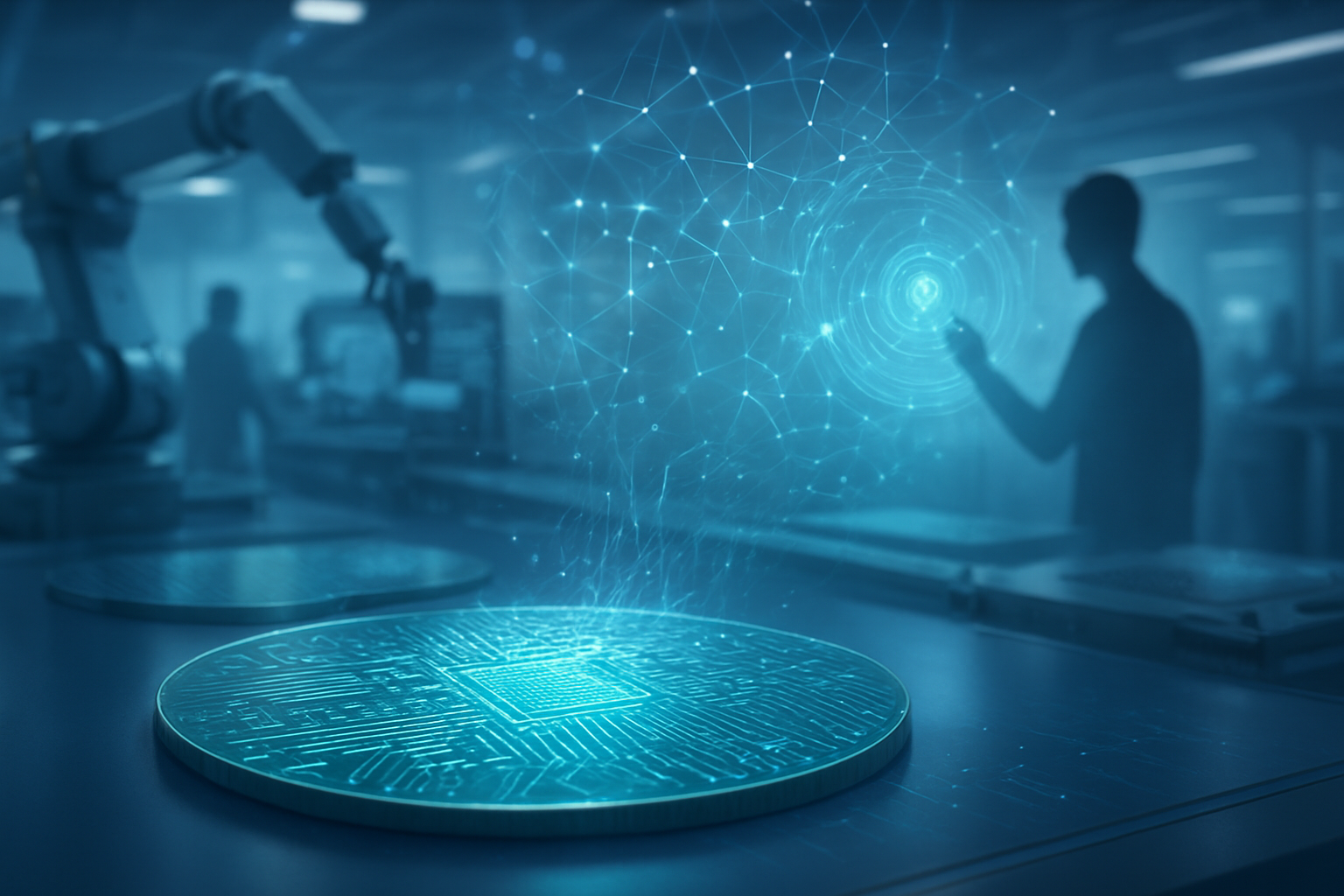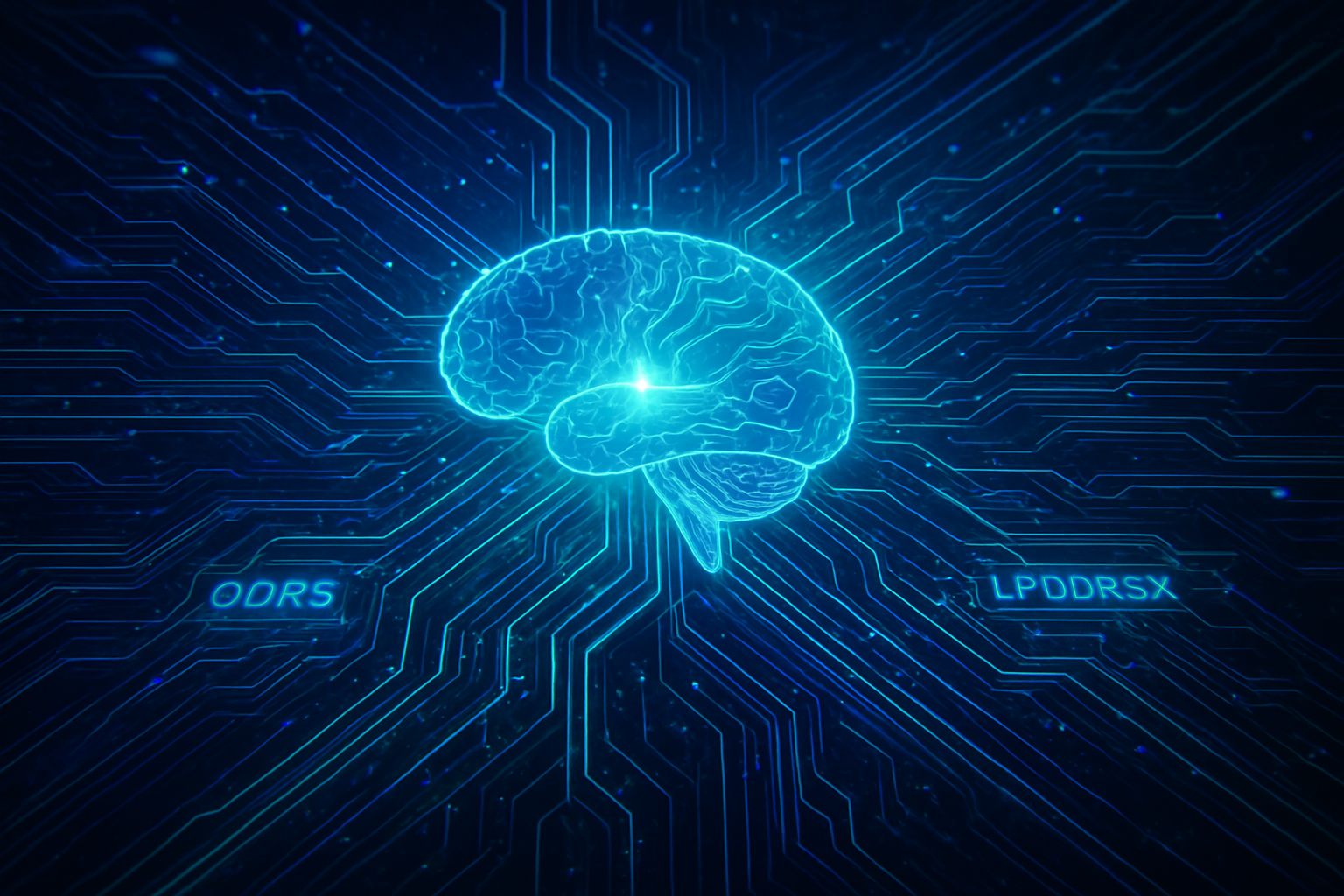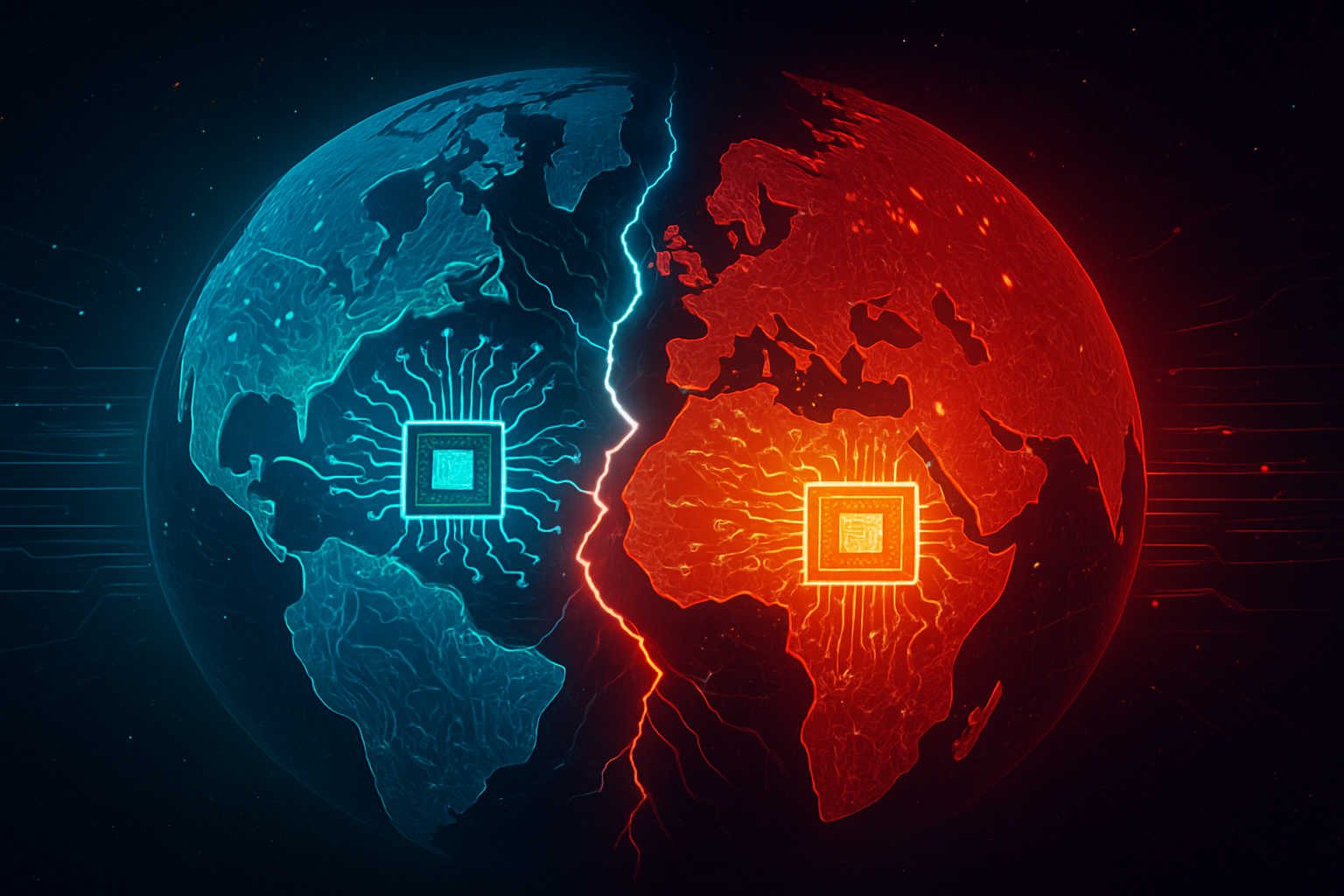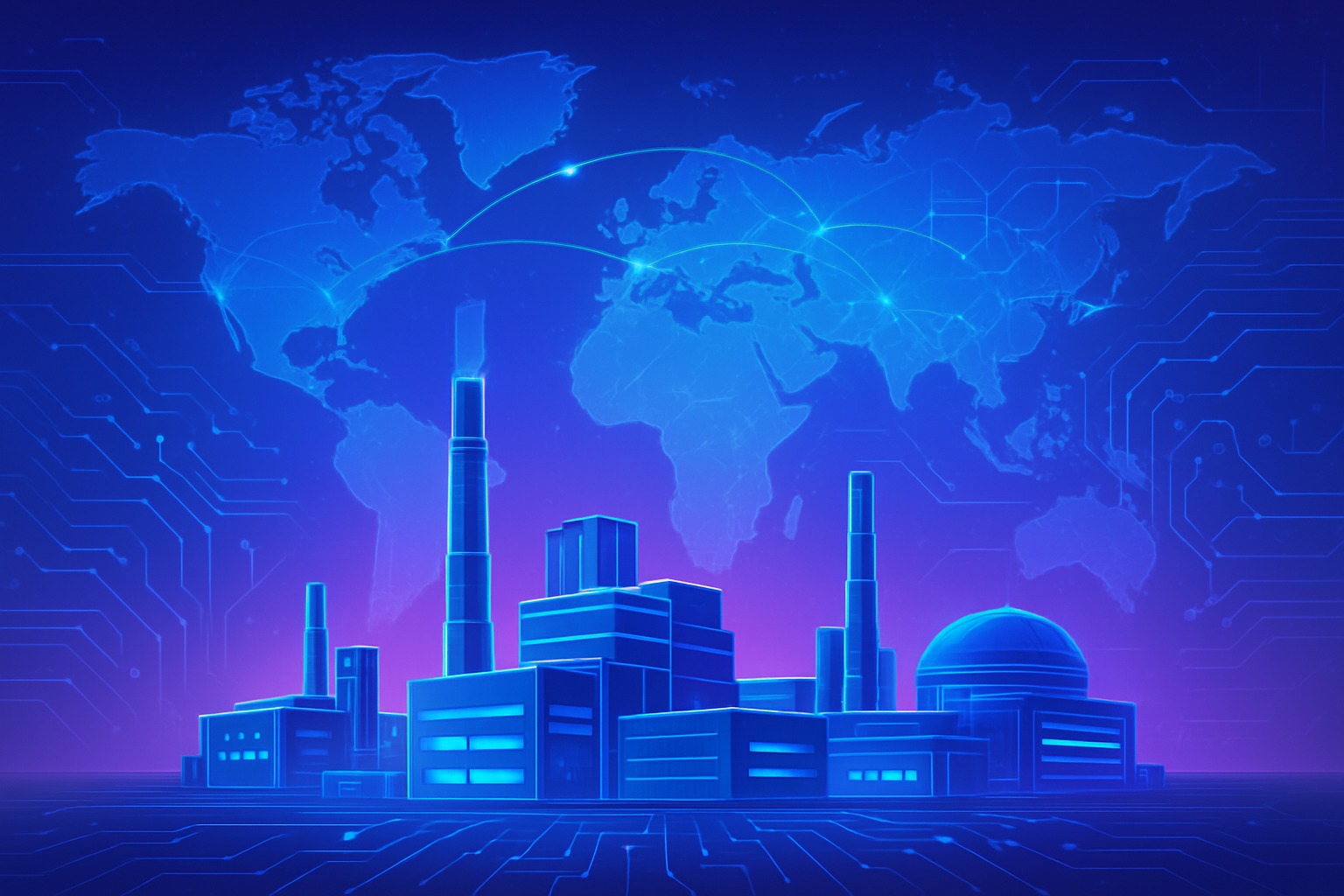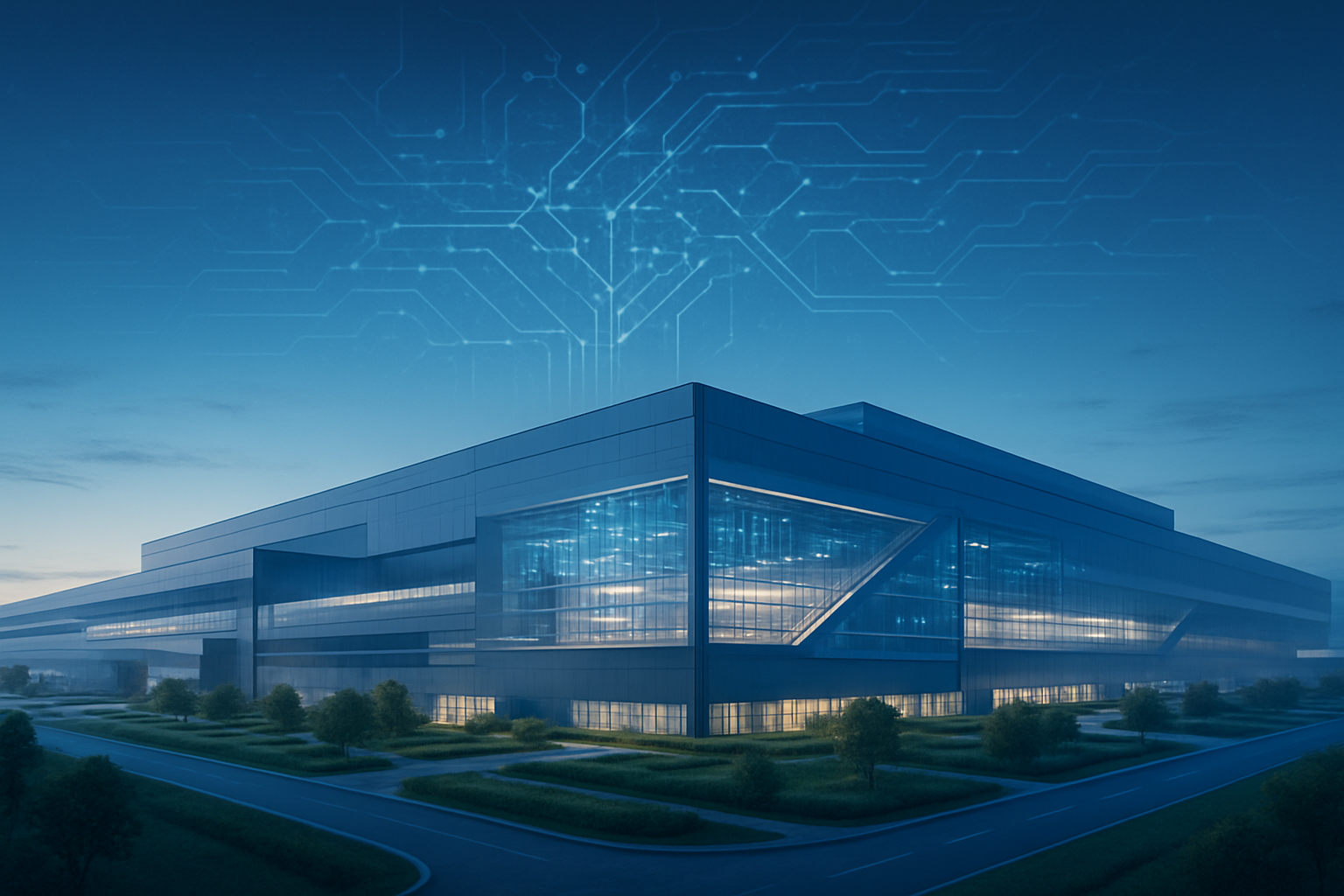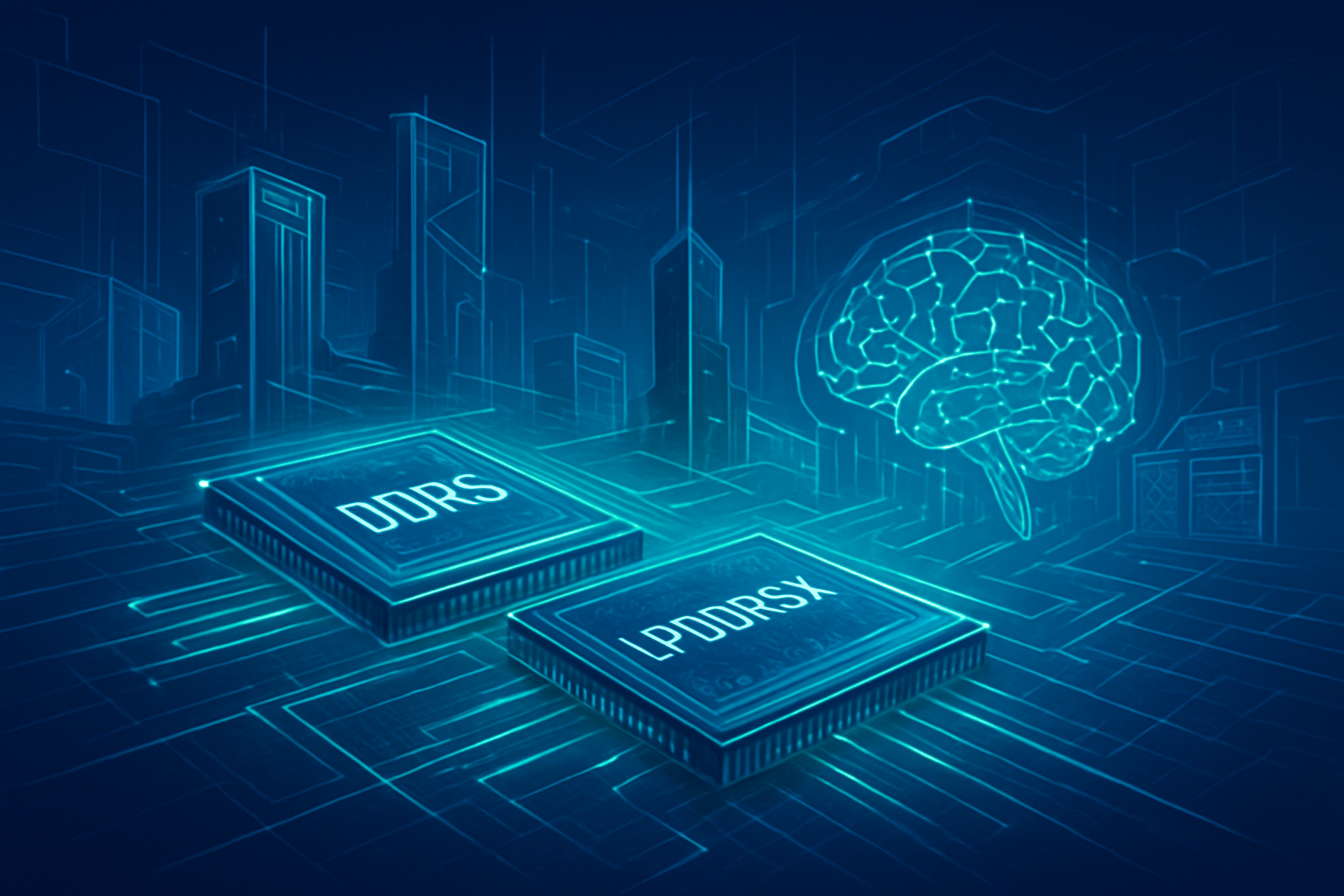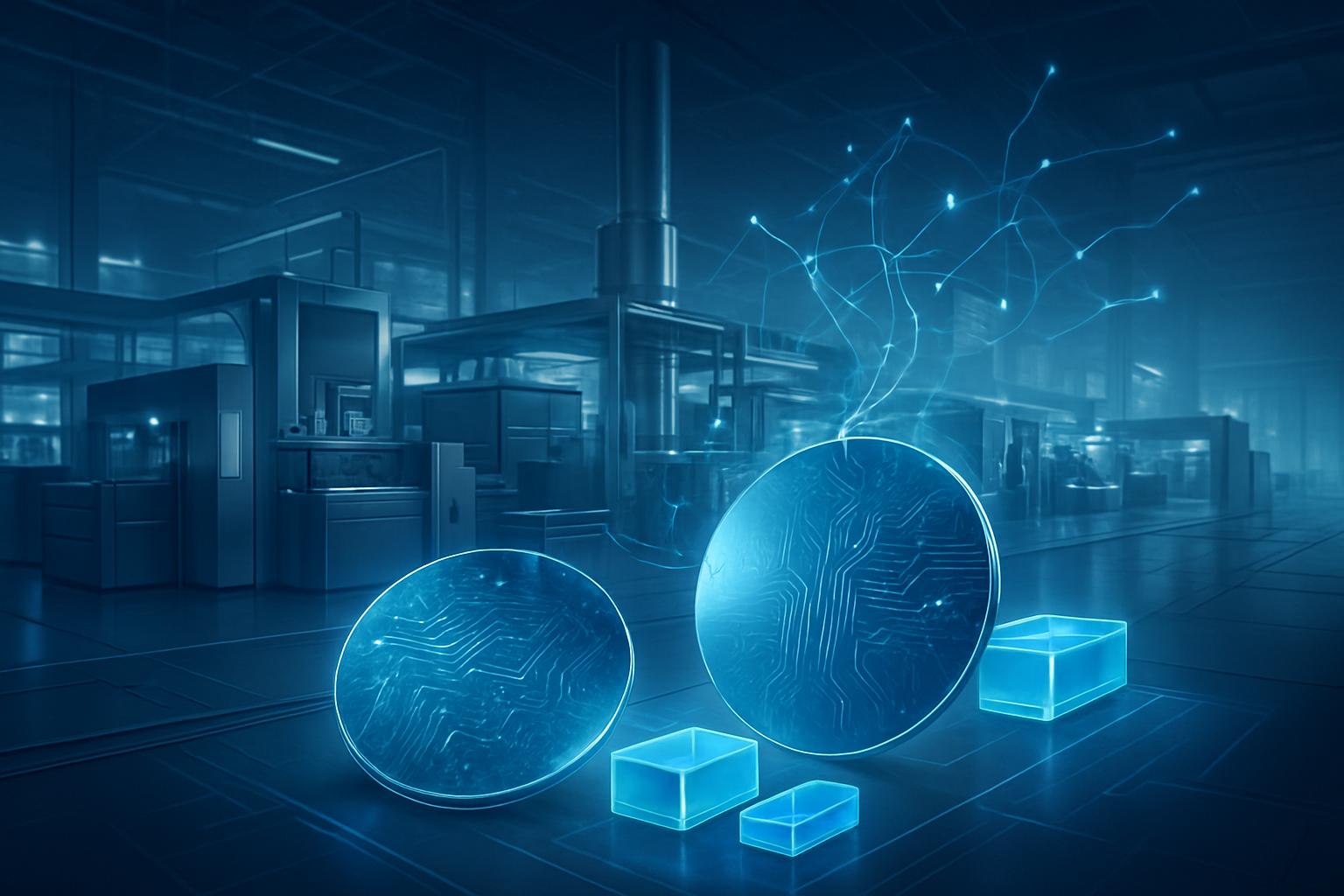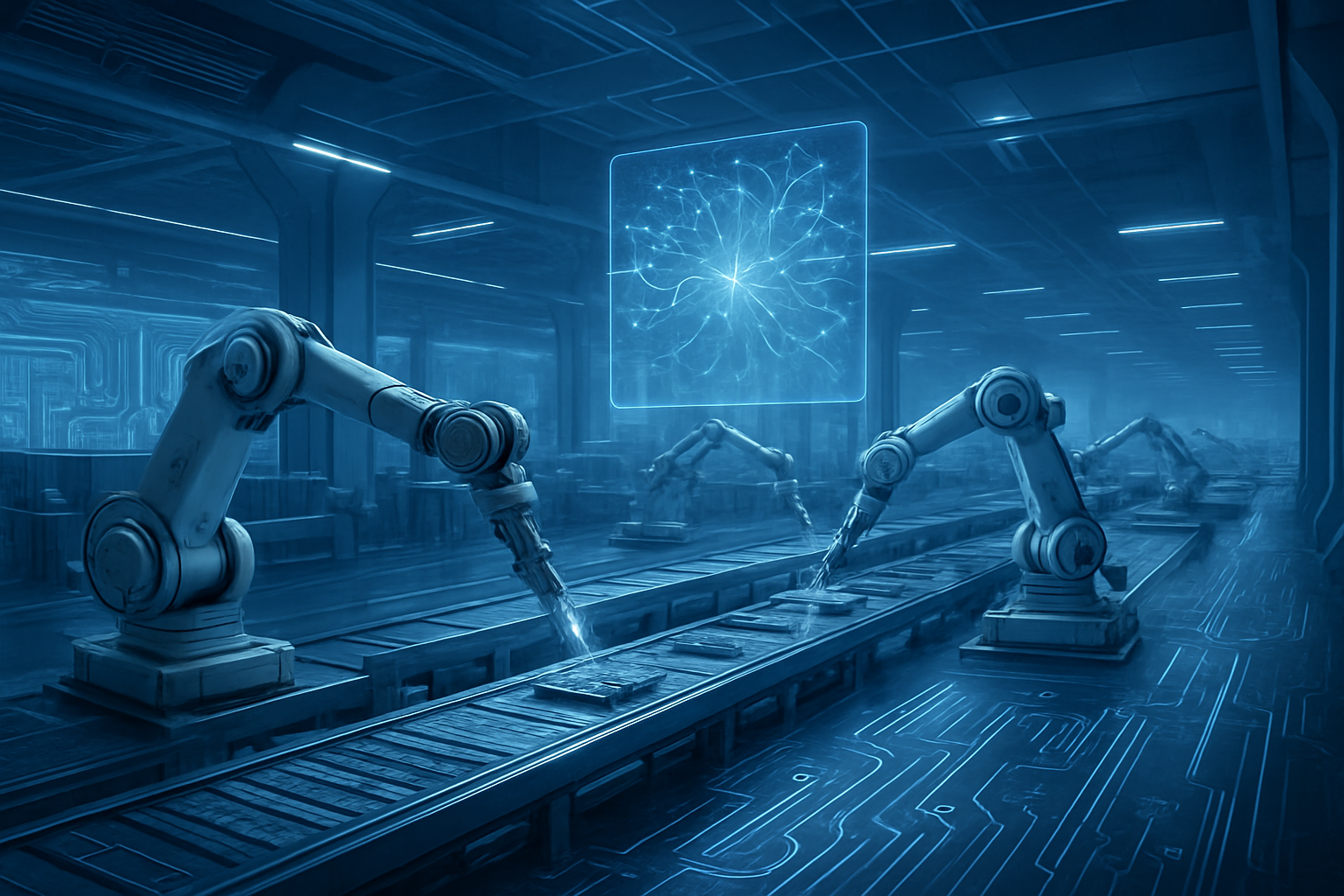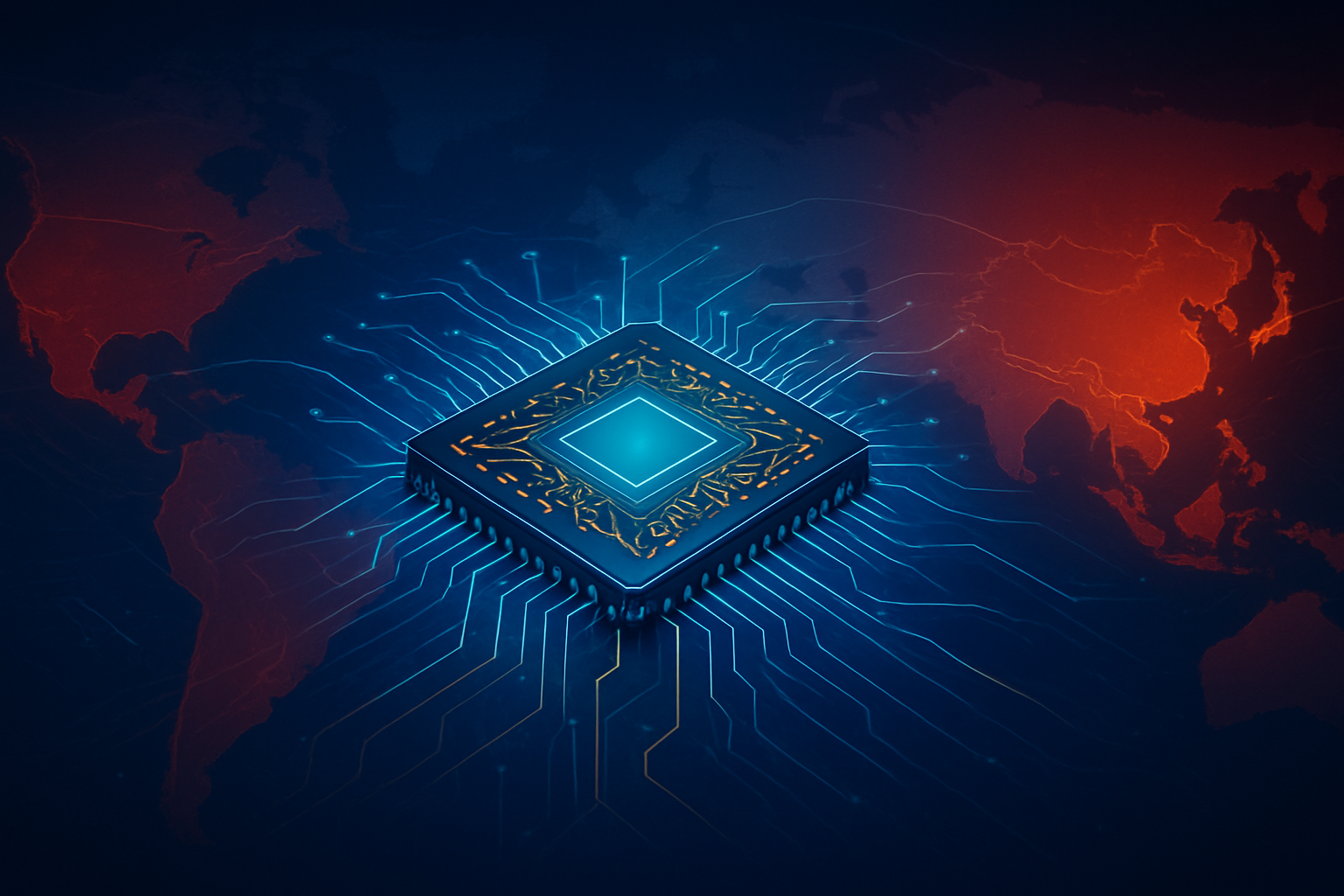The global semiconductor industry, the bedrock of modern technology and the engine of artificial intelligence, is undergoing a profound and unprecedented transformation driven by escalating geopolitical tensions between the United States and China. As of late 2025, a "chip war" rooted in national security, economic dominance, and technological supremacy is fundamentally redrawing the industry's map, forcing a shift from an efficiency-first globalized model to one prioritized by resilience and regionalized control. This strategic realignment has immediate and far-reaching implications, creating bifurcated markets and signaling the advent of "techno-nationalism" where geopolitical alignment increasingly dictates technological access and economic viability.
The immediate significance of this tectonic shift is a global scramble for technological self-sufficiency and supply chain de-risking. Nations are actively seeking to secure critical chip manufacturing capabilities within their borders or among trusted allies, leading to massive investments in domestic production and a re-evaluation of international partnerships. This geopolitical chess match is not merely about trade; it's about controlling the very infrastructure of the digital age, with profound consequences for innovation, economic growth, and the future trajectory of AI development worldwide.
The Silicon Curtain Descends: Technical Specifications and Strategic Shifts
The core of the US-China semiconductor struggle manifests through a complex web of export controls, investment restrictions, and retaliatory measures designed to either constrain or bolster national technological capabilities. The United States has aggressively deployed tools such as the CHIPS and Science Act of 2022, allocating over $52 billion to incentivize domestic manufacturing and R&D. This has spurred major semiconductor players like Taiwan Semiconductor Manufacturing Company (TSMC) (NYSE: TSM), Intel (NASDAQ: INTC), and Micron Technology (NASDAQ: MU) to expand operations in the US, notably with TSMC's commitment to building two advanced 2nm chip manufacturing plants in Arizona by 2030, representing a $65 billion investment. Furthermore, recent legislative efforts like the bipartisan Semiconductor Technology Resilience, Integrity, and Defense Enhancement (STRIDE) Act, introduced in November 2025, aim to bar CHIPS Act recipients from purchasing Chinese chipmaking equipment for a decade, tightening the noose on China's access to crucial technology.
These US-led restrictions specifically target China's ability to produce or acquire advanced semiconductors (7nm or below) and the sophisticated equipment and software required for their fabrication. Expanded controls in December 2024 on 24 types of chip-making equipment and three critical software tools underscore the technical specificity of these measures. In response, China, under its "Made in China 2025" policy and backed by substantial state funding through "The Big Fund," is relentlessly pursuing self-sufficiency, particularly in logic chip production (targeting 10-22nm and >28nm nodes) and semiconductor equipment. By late 2025, China projects a significant rise in domestic chip self-sufficiency, with an ambitious goal of 50% for semiconductor equipment.
This current geopolitical landscape starkly contrasts with the previous era of hyper-globalization, where efficiency and cost-effectiveness drove a highly interconnected and interdependent supply chain. The new paradigm emphasizes "friend-shoring" and "reshoring," prioritizing national security and resilience over pure economic optimization. Initial reactions from the AI research community and industry experts reveal a mix of concern and adaptation. While some acknowledge the necessity of securing critical technologies, there are widespread worries about increased costs, potential delays in innovation due to reduced global collaboration, and the risk of market fragmentation. Executives from companies like TSMC and Nvidia (NASDAQ: NVDA) have navigated these complex restrictions, with Nvidia notably developing specialized AI chips (like the H200) for the Chinese market, though even these face potential US export restrictions, highlighting the tightrope walk companies must perform. The rare "tech truce" observed in late 2025, where the Trump administration reportedly considered easing some Nvidia H200 restrictions in exchange for China's relaxation of rare earth export limits, signals the dynamic and often unpredictable nature of this ongoing geopolitical saga.
Geopolitical Fault Lines Reshape the Tech Industry: Impact on Companies
The escalating US-China semiconductor tensions have profoundly reshaped the landscape for AI companies, tech giants, and startups as of late 2025, leading to significant challenges, strategic realignments, and competitive shifts across the global technology ecosystem. For American semiconductor giants, the impact has been immediate and substantial. Companies like Nvidia (NASDAQ: NVDA) have seen their market share in China, a once-booming region for AI chip demand, plummet from 95% to 50%, with CEO Jensen Huang forecasting potential zero sales if restrictions persist, representing a staggering $15 billion potential revenue loss from the H20 export ban alone. Other major players such as Micron Technology (NASDAQ: MU), Intel (NASDAQ: INTC), and QUALCOMM Incorporated (NASDAQ: QCOM) also face considerable revenue and market access challenges due to stringent export controls and China's retaliatory measures, with Qualcomm, in particular, seeing export licenses for certain technologies to Huawei revoked.
Conversely, these restrictions have inadvertently catalyzed an aggressive push for self-reliance within China. Chinese AI companies, while initially forced to innovate with older technologies or seek less advanced domestic solutions, are now beneficiaries of massive state-backed investments through initiatives like "Made in China 2025." This has led to rapid advancements in domestic chip production, with companies like ChangXin Memory Technologies (CXMT) and Yangtze Memory Technologies Corp (YMTC) making significant strides in commercializing DDR5 and pushing into high-bandwidth memory (HBM3), directly challenging global leaders. Huawei, with its Ascend 910C chip, is increasingly rivaling Nvidia's offerings for AI inference tasks within China, demonstrating the potent effect of national industrial policy under duress.
The competitive implications are leading to a "Great Chip Divide," fostering the emergence of two parallel AI systems globally, each with potentially different technical standards, supply chains, and software stacks. This bifurcation hinders global interoperability and collaboration, creating a more fragmented and complex market. While the US aims to maintain its technological lead, its export controls have inadvertently spurred China's drive for technological independence, accelerating its ambition for a complete, vertically integrated semiconductor supply chain. This strategic pivot has resulted in projections that Chinese domestic AI chips could capture 55% of their market by 2027, eroding the market share of American chipmakers and disrupting their scale-driven business models, which could, in turn, reduce their capacity for reinvestment in R&D and weaken long-term competitiveness.
The volatility extends beyond direct sales, impacting the broader investment landscape. The increasing cost of reshoring and nearshoring semiconductor manufacturing, coupled with tightened export controls, creates funding challenges for tech startups, particularly those in the US. This could stifle the emergence of groundbreaking technologies from smaller, less capitalized players, potentially leading to an innovation bottleneck. Meanwhile, countries like Saudi Arabia and the UAE are strategically positioning themselves as neutral AI hubs, gaining access to advanced American AI systems like Nvidia's Blackwell chips while also cultivating tech ties with Chinese firms, diversifying their access and potentially cushioning the impact of US-China tech tensions.
Wider Significance: A Bifurcated Future for Global AI
The US-China semiconductor tensions, often dubbed the "chip war," have far-reaching implications that extend beyond mere trade disputes, fundamentally reshaping the global technological and geopolitical landscape as of late 2025. This conflict is rooted in the recognition by both nations that semiconductors are critical assets in a global tech arms race, essential for everything from consumer electronics to advanced military systems and, crucially, artificial intelligence. The US strategy, focused on restricting China's access to advanced chip technologies, particularly high-performance GPUs vital for training sophisticated AI systems, reflects a "technology defense logic" where national security imperatives now supersede market access concerns.
This has led to a profound transformation in the broader AI landscape, creating a bifurcated global ecosystem. The world is increasingly splitting into separate tech stacks, with different countries developing their own standards, supply chains, and software ecosystems. While this could lead to a less efficient system, proponents argue it fosters greater resilience. The US aims to maintain its lead in sub-3nm high-end chips and the CUDA-based ecosystem, while China is pouring massive state funding into its domestic semiconductor industry to achieve self-reliance. This drive has led to remarkable advancements, with Semiconductor Manufacturing International Corporation (SMIC) (HKG: 0981) reportedly achieving 7-nanometer process technology using existing Deep Ultraviolet (DUV) lithography equipment and even trialing 5-nanometer-class chips, showcasing China's "ingenuity under pressure."
The impacts on innovation and costs are complex and often contradictory. On one hand, the fragmentation of traditional global collaboration threatens to slow overall technological progress due to duplication of efforts and loss of scale. Broad market access barriers and restrictions on technology transfers could disrupt beneficial feedback loops that have driven innovation for decades. On the other hand, US restrictions have paradoxically galvanized China's efforts to innovate domestically, pushing it to develop new AI approaches, optimize software for existing hardware, and accelerate research in AI and quantum computing. However, this comes at a significant financial cost, with companies worldwide facing higher production expenses due to disrupted supply chains and the increased price of diversifying manufacturing. A full US-China semiconductor split could cost US companies billions in lost revenues and R&D annually, with these increased costs ultimately likely to be passed on to global consumers.
The potential concerns arising from this "chip war" are substantial, ranging from increased geopolitical instability and the risk of an "AI Cold War" to deeper economic decoupling and deglobalization. Taiwan, home to TSMC, remains a crucial geopolitical flashpoint. The accelerating AI race, fueled by demand for powerful chips and data centers, also poses significant environmental risks, as energy-hungry data centers and water-intensive cooling outpace environmental safeguards. This techno-economic rivalry is often compared to a modern-day arms race, akin to the space race during the Cold War, where technological superiority directly translates into military and economic power. The focus on controlling "compute"—the raw amount of digital information a country can process—is now a key ingredient for powering AI, making this conflict a defining moment in the history of technology and international relations.
Future Developments: An Accelerating Tech War and Bifurcated Ecosystems
The US-China semiconductor tensions are expected to intensify in the near term and continue to fundamentally reshape the global technology landscape, with significant implications for both nations and the broader international community. As of late 2025, these tensions are characterized by escalating restrictions, retaliatory measures, and a determined push by China for self-sufficiency. In the immediate future (late 2025 – 2026), the United States is poised to further expand its export controls on advanced semiconductors, manufacturing equipment, and design software directed at China. Proposed legislation like the Semiconductor Technology Resilience, Integrity, and Defense Enhancement (STRIDE) Act, introduced in November 2025, aims to prevent CHIPS Act recipients from acquiring Chinese chipmaking equipment for a decade, signaling a tightening of controls on advanced AI chips and high-bandwidth memory (HBM) technologies.
In response, China will undoubtedly accelerate its ambition for technological self-reliance across the entire semiconductor supply chain. Beijing's "Made in China 2025" and subsequent strategic plans emphasize domestic development, backed by substantial government investments through initiatives like the "Big Fund," to bolster indigenous capabilities in chip design software, manufacturing processes, and advanced packaging. This dynamic is also driving a global realignment of semiconductor supply chains, with companies increasingly adopting "friend-shoring" strategies and diversifying manufacturing bases to countries like Vietnam, India, and Mexico. Major players such as Intel (NASDAQ: INTC) and TSMC (NYSE: TSM) are expanding operations in the US and Europe to mitigate geopolitical risks, while China has already demonstrated its capacity for retaliation by restricting exports of critical rare earth metals like gallium and germanium.
Looking further ahead (beyond 2026), the rivalry is predicted to foster the development of increasingly bifurcated and parallel technological ecosystems. China aims to establish a largely self-sufficient semiconductor industry for strategic sectors like autonomous vehicles and smart devices, particularly in mature-node (28nm and above) chips. This intense competition is expected to fuel significant R&D investment and innovation in both countries, especially in emerging fields like AI and quantum computing. China's 15th five-year plan (2026-2030) specifically targets increased self-reliance and strength in science and technology, with a strong focus on semiconductors and AI. The US will continue to strengthen alliances like the "Chip-4 alliance" (comprising Japan, South Korea, and Taiwan) to build a "democratic semiconductor supply chain," although stringent US controls could strain relationships with allies, potentially prompting them to seek alternatives and inadvertently bolstering Chinese competitors. Despite China's significant strides, achieving full self-sufficiency in cutting-edge logic foundry processes (below 7nm) is expected to remain a substantial long-term challenge due to its reliance on international expertise, advanced manufacturing equipment (like ASML's EUV lithography machines), and specialized materials.
The primary application of these US policies is national security, aiming to curb China's ability to leverage advanced semiconductors for military modernization and to preserve US leadership in critical technologies like AI and advanced computing. Restrictions on high-performance chips directly hinder China's ability to develop and scale advanced AI applications and train large language models, impacting AI development in military, surveillance, and other strategic sectors. However, both nations face significant challenges. US chip companies risk substantial revenue losses due to diminished access to the large Chinese market, impacting R&D and job creation. China, despite massive investment, continues to face a technological lag in cutting-edge chip design and manufacturing, coupled with talent shortages and the high costs of self-sufficiency. Experts widely predict a sustained and accelerating tech war, defining the geopolitical and economic landscape of the next decade, with no easy resolution in sight.
The Silicon Curtain: A Defining Moment in AI History
The US-China semiconductor tensions have dramatically reshaped the global technological and geopolitical landscape, evolving into a high-stakes competition for dominance over the foundational technology powering modern economies and future innovations like Artificial Intelligence (AI). As of late 2025, this rivalry is characterized by a complex interplay of export controls, retaliatory measures, and strategic reorientations, marking a pivotal moment in AI history.
The key takeaway is that the United States' sustained efforts to restrict China's access to advanced semiconductor technology, particularly those critical for cutting-edge AI and military applications, have led to a significant "technological decoupling." This strategy, which began escalating in 2022 with sweeping export controls and has seen multiple expansions through 2023, 2024, and 2025, aims to limit China's ability to develop advanced computing technologies. In response, China has weaponized its supply chains, notably restricting exports of critical minerals like gallium and germanium, forcing countries and companies globally to reassess their strategies and align with one of the two emerging technological ecosystems. This has fundamentally altered the trajectory of AI development, creating two parallel AI paradigms and potentially leading to divergent technological standards and reduced global collaboration.
The long-term impacts are profound and multifaceted. We are witnessing an acceleration towards technological decoupling and fragmentation, which could lead to inefficiencies, increased costs, and a slowdown in overall technological progress due to reduced international collaboration. China is relentlessly pursuing technological sovereignty, significantly expanding its foundational chipmaking capabilities and aiming to achieve breakthroughs in advanced nodes and dominate mature-node production by 2030. Chinese firms like Semiconductor Manufacturing International Corporation (SMIC) (HKG: 0981) are actively adding advanced node capacity, suggesting that US export controls have been "less than effective" in fully thwarting China's progress. This has also triggered a global restructuring of supply chains, with companies diversifying manufacturing to mitigate risks, albeit at increased production costs that will likely translate to higher prices for electronic products worldwide.
In the coming weeks and months of late 2025, several critical developments bear close watching. There are ongoing discussions within the US government regarding the potential easing of export controls on advanced Nvidia (NASDAQ: NVDA) AI chips, such as the H200, to China. This potential loosening of restrictions, reportedly influenced by a "Busan Declaration" diplomatic truce, could signal a thaw in trade disputes, though a final decision remains uncertain. Concurrently, the Trump administration is reportedly considering delaying promised tariffs on semiconductor imports to avoid further escalating tensions and disrupting critical mineral flows. China, in a reciprocal move, recently deferred its October 2025 export controls on critical minerals for one year, hinting at a transactional approach to the ongoing conflict. Furthermore, new US legislation seeking to prohibit CHIPS Act grant recipients from purchasing Chinese chipmaking equipment for a decade will significantly impact the domestic semiconductor industry. Simultaneously, China's domestic semiconductor industry progress, including an upcoming upgraded "Made in China" plan expected around March 2026 and recent advancements in photonic quantum chips, will be key indicators of the effectiveness of these geopolitical maneuvers. The debate continues among experts: are US controls crippling China's ambitions or merely accelerating its indigenous innovation? The coming months will reveal whether conciliatory gestures lead to a more stable, albeit still competitive, relationship, or if they are temporary pauses in an escalating "chip war."
This content is intended for informational purposes only and represents analysis of current AI developments.
TokenRing AI delivers enterprise-grade solutions for multi-agent AI workflow orchestration, AI-powered development tools, and seamless remote collaboration platforms.
For more information, visit https://www.tokenring.ai/.
